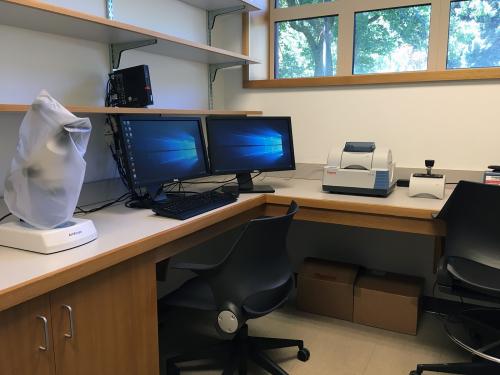
A new Thermo iS5 transmission FTIR and an iD7 diamond ATR attachment has been installed in our Clean Lab, thanks to a Howard Hughes Medical Institute’s Campus Grant to Yale University. Fourier transform infrared spectroscopy (FTIR) is a fast and flexible method of chemical analysis. As explained by Amy Margaris of Oberlin College: “Few techniques for chemical analysis are as rapid and informative as… FTIR. FTIR can be used to identify and compare sample compositions and in a quantitative fashion to determine the concentration of different components of a mixture. Its popularity in the field of conservation reflects attributes that make the technique appealing for many archaeological applications as well, including the small amount of sample required for analysis (milligrams or micrograms) and the fact that samples can be organic or inorganic and have a crystalline or amorphous structure. Its wide applicability makes FTIR a particular asset to nearly any professional archaeology laboratory as it can aid in determining the composition of such materials as fired clays, bone and tooth enamel, wood ash, fibers and dyes, plasters, and resins.”